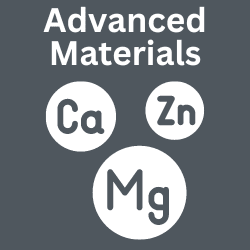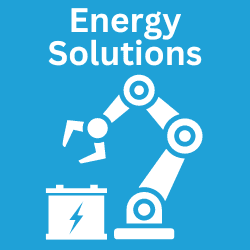Trajectory Mixing of
High-Performance
Materials
Trajectory Mixing of
High-Performance
Materials
Manufacturing Technical Ceramics
and Refractory Materials
Manufacturing Technical Ceramics
and Refractory Materials
Trajectory Mixing of High-Performance Materials
Trajectory Mixing of High-Performance Materials
Manufacturing Technical Ceramics and Refractory Materials
Manufacturing Technical Ceramics and Refractory Materials
Trajectory mixing
Trajectory Mixing involves mixing materials through the movement of the container along a 2-dimensional curved path. These movements follow precise patterns known as Lissajous figures. The resulting accelerations generate shear and tensile forces, which efficiently achieve a homogeneous mix. The ability to control the movement parameters allows the mixing quality to be tailored to specific requirements.
Why trajectory mixing for technical materials?
Benefits at a glance
- High-precision distribution: Uniform particle dispersion for improved product strength
- Low agglomeration: Fine dispersion minimizes defects in ceramics and refractory materials
- Scalable: Linear transfer from lab to industrial scale
Application examples
- Ceramics: Optimal microstructure for technical and decorative ceramics
- Refractory materials: Uniform mixing of oxides for high thermal resistance
- Minerals: Homogeneous processing of mineral powders for specialized applications
Your Benefits with Trajectory Mixers
- Up to 100% agglomerate-free mixture: Guaranteed prevention of agglomerates.
- Trajectory mixing: Uses precisely controlled particle movement.
- Specific trajectory curve: Ensures even particle distribution.
- Agglomerate reduction: Particles are continuously separated and repositioned.
- High homogeneity and consistent quality: Achieved through 100% mixing.
- Reduced mixing time: Thanks to 100% mixing of the entire product, mixing time is significantly reduced.
- Programmed trajectory curves: Allow precise reproducibility of processes.
- Individually adjustable shear forces: Enable gentle processing of materials.
- Optimal choice for precision and material protection: Ideal for industrial applications with high demands.
Equipment
- Extended functions: Heating, cooling, and artificial vacuum for versatile applications.
- AI-driven adjustments: Automatic adjustment of mixing parameters through artificial intelligence.
- Intelligent maintenance systems: Automatic maintenance and fault diagnosis.
- Network integration: Networking for process optimization and more efficient control.
- Fast material adaptation: Flexibility in adapting new materials.
- Simulations and visualizations: Optimization of processes through advanced simulation and visualization tools.
- High flexibility: The agitator tool can be replaced by an agitator wall.
- Easy product changeover: Only cleaning or container replacement is required.
- Batch-continuous operation: Program change is sufficient to adjust the mixing recipe.
- Quick changeover: Allows rapid adjustments to different products and recipes.
- Versatility: Suitable for a wide range of applications.
- Agitator-less mixing system: Minimizes setup time since only the container needs to be changed.
- Compact container size: Reduces effort and time for cleaning.
- Option for disposable containers: Enables even less cleaning effort and increases flexibility.
- Highest hygiene standards: Provides a cost-effective solution for top-notch cleanliness.
- Minimal contamination risk: The absence of an agitator and precise control of the coating's hardness grades reduce the risk of contamination to nearly 0 percent.
- High product purity: The contamination-free environment ensures high purity of the final product.
- Maximum safety: Ideal for highly sensitive production environments, enhancing safety and product quality.
- Cost reduction: Long-term savings due to reduced scrap and rework costs.
Industry
- Versatile application: Ideal for solid-solid, solid-liquid, liquid-liquid, and liquid-gas mixtures.
- Industry-specific customization: Perfect for a variety of industries, such as food processing and technical materials.
- Proportional size adjustment: The size parameters have been adjusted proportionally to the machine's capacity.
- Consistent mixing process: The mixing process can be transferred from small to large machines without additional product development.
Quantities
- Variable capacity: Mixes quantities from 1 to 7200 kilograms.
- Fast mixing processes: Mixing times as short as 15 seconds.
- Process flexibility: Supports both batch and continuous mixing processes.
- Quick changeover: Rapid exchange of containers and products.
- Minimal setup times: Little to no reconfiguration effort, allowing quick adaptation to production needs.
- Up to 100% agglomerate-free mixture: Guaranteed prevention of agglomerates.
- Trajectory mixing: Uses precisely controlled particle movement.
- Specific trajectory curve: Ensures even particle distribution.
- Agglomerate reduction: Particles are continuously separated and repositioned.
- High homogeneity and consistent quality: Achieved through 100% mixing.
- Reduced mixing time: Thanks to 100% mixing of the entire product, mixing time is significantly reduced.
- Programmed trajectory curves: Allow precise reproducibility of processes.
- Individually adjustable shear forces: Enable gentle processing of materials.
- Optimal choice for precision and material protection: Ideal for industrial applications with high demands.
Equipment
- Extended functions: Heating, cooling, and artificial vacuum for versatile applications.
- AI-driven adjustments: Automatic adjustment of mixing parameters through artificial intelligence.
- Intelligent maintenance systems: Automatic maintenance and fault diagnosis.
- Network integration: Networking for process optimization and more efficient control.
- Fast material adaptation: Flexibility in adapting new materials.
- Simulations and visualizations: Optimization of processes through advanced simulation and visualization tools.
- High flexibility: The agitator tool can be replaced by an agitator wall.
- Easy product changeover: Only cleaning or container replacement is required.
- Batch-continuous operation: Program change is sufficient to adjust the mixing recipe.
- Quick changeover: Allows rapid adjustments to different products and recipes.
- Versatility: Suitable for a wide range of applications.
- Agitator-less mixing system: Minimizes setup time since only the container needs to be changed.
- Compact container size: Reduces effort and time for cleaning.
- Option for disposable containers: Enables even less cleaning effort and increases flexibility.
- Highest hygiene standards: Provides a cost-effective solution for top-notch cleanliness.
- Minimal contamination risk: The absence of an agitator and precise control of the coating's hardness grades reduce the risk of contamination to nearly 0 percent.
- High product purity: The contamination-free environment ensures high purity of the final product.
- Maximum safety: Ideal for highly sensitive production environments, enhancing safety and product quality.
- Cost reduction: Long-term savings due to reduced scrap and rework costs.
Industry
- Versatile application: Ideal for solid-solid, solid-liquid, liquid-liquid, and liquid-gas mixtures.
- Industry-specific customization: Perfect for a variety of industries, such as food processing and technical materials.
- Proportional size adjustment: The size parameters have been adjusted proportionally to the machine's capacity.
- Consistent mixing process: The mixing process can be transferred from small to large machines without additional product development.
Quantities
- Variable capacity: Mixes quantities from 1 to 7200 kilograms.
- Fast mixing processes: Mixing times as short as 15 seconds.
- Process flexibility: Supports both batch and continuous mixing processes.
- Quick changeover: Rapid exchange of containers and products.
- Minimal setup times: Little to no reconfiguration effort, allowing quick adaptation to production needs.
Quality Assurance and Process Optimization
Measurement and Optimization of Mixing Quality
A key aspect in food production is ensuring mixing quality, quantified by analyzing distribution variance.
- Continuous Monitoring: Allows early detection and correction of deviations, ensuring consistently high product quality.
- Optimization of Process Parameters: Experimental studies and simulations support determining and adjusting optimal mixing parameters for various applications.
Process Control and Automation
The integration of trajectory mixing into automated production processes enables precise control and optimization of mixing operations.
- Automated Mixing Processes: The ability to tailor movement profiles individually makes trajectory mixing ideal for use in automated production environments.
- Efficient Resource Utilization: Through automation and precise control of mixing processes, resources can be utilized more efficiently, minimizing waste.
Advantages of Trajectory Mixing
- High flexibility: Product-specific trajectory curves that can dynamically adapt to your products’ requirements enable a wide range of applications for diverse materials and mixing needs.
- Gentle process: The minimized energy input of this method protects raw materials and prevents damage. This is especially important for sensitive feedstocks that would be compromised by conventional agitators.
- Space savings: The compact design of the trajectory mixer is ideal for production environments with limited floor space.
- Small-batch processing: Trajectory mixing allows for the handling of very small quantities, which is particularly advantageous in research and development as well as in artisanal applications. The process is linearly scalable from lab scale to full industrial use.
- Reduced cleaning and setup effort: Eliminating traditional mixing tools like paddles or kneaders significantly lowers contamination risks and reduces cleaning and maintenance time. This leads to lower operating costs and higher availability of the mixing equipment.







